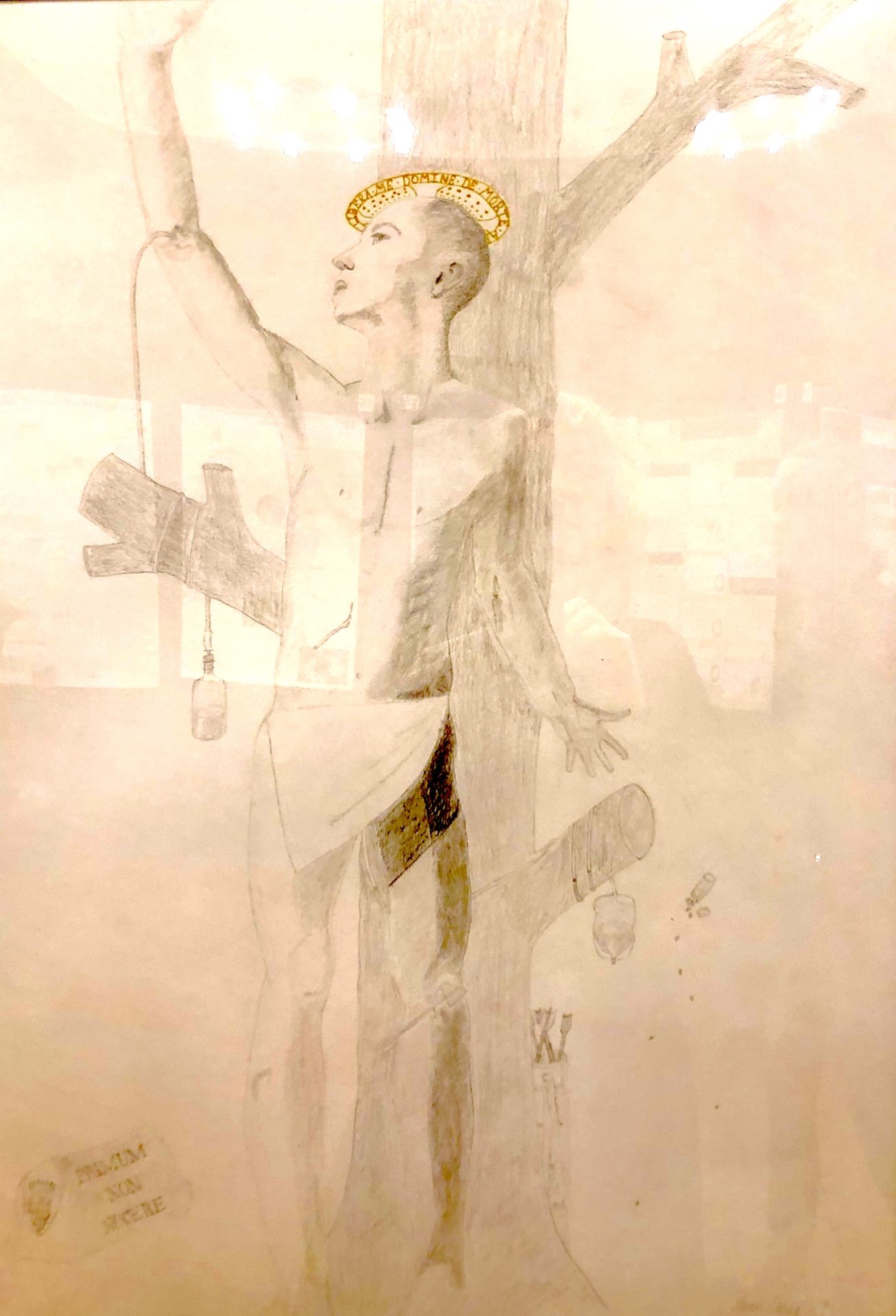Primum non nocere: first do no harm
‘Primum non nocere’ The piece’s title refers to lines erroneously attributed to Hippocrates, meaning ‘First, do no harm’. No matter its origins, this is one of the founding principles of medicine, yet even simple procedures of contradict this doctrine. Starting with diagnosis, doctors administer acute pain to those they are working to heal. When it comes to treatment, regularly prescribed remedies involve killing the cells of the body with poisonous chemicals, peeling away a patient’s flesh, electrocution – claiming subscription to this philosophy of non-maleficence seems surreal. The image is an amalgamation of the biblical figure St. Sebastian and the Wound Man, a teaching tool from the Middle Ages. In its infancy, the Wound Man was an illustration used to teach surgeons, detailing various ways a person could be impaled or eviscerated, accompanied by relevant treatment information. The violent implements of the traditional Wound Man have been replaced by examples of the treatments modern doctors ‘inflict’ on patients. When we become clinicians, to what extent will we be mindful of the consequences of our choices, and understand the pain we inflict? St. Sebastian, on the other hand, is a recurring theme in Renaissance painting; the traditional composition sees him tied to a tree, having been pierced with arrows for his beliefs. He pairs well with the Wound Man as an image of a beautiful youth, and because they were both used as educational tools at around the same period in history. His inclusion also alludes to a thought about patients’ roles in medicine; how many patients have died as a result of a doctor’s ministering? How many more have suffered as a result of medical experiments and trials? If doctors have sometimes played God, have not many patients been martyrs?
This work was exhibited at the Foundations of Medicine student conference 2019 as part of a collaborative project
Group 6
Group 6

This piece is a really interesting exploration of one of the most basic principles of medicine; do no harm. The historical references within in this artwork really anchor its themes, referencing both a famous artwork of St Sebastian, and a Wound Man. The Wound Man was used by physicians in the middle ages to understand many of the ways that a person could be harmed, and thus treated. Within this piece of art th wounds are created by tools of modern medicine, tools that are meant to “heal” instead of harm. Here the work explores the boundries of medicine, and the idea that just because we can fix something, it isnt always something we should do. Here chemotherapy is used as an example as one of the treatements which can in some circumstances do more harm than good, as while it can be an effective treatement of certain cancers, as it attacks the cancer it can also attack the body. This is particularly relevant when thinking about palliative care and end of life support, where this work suggests that there is a balance between prolonging a persons life, and maintaining its quality, where to attempt a treatment with intense and overwhelming side effects may do more harm than good.